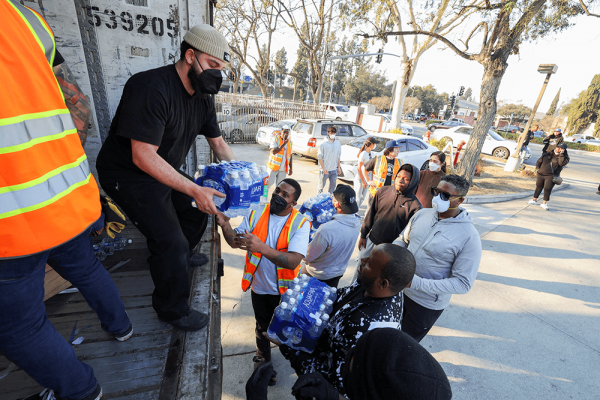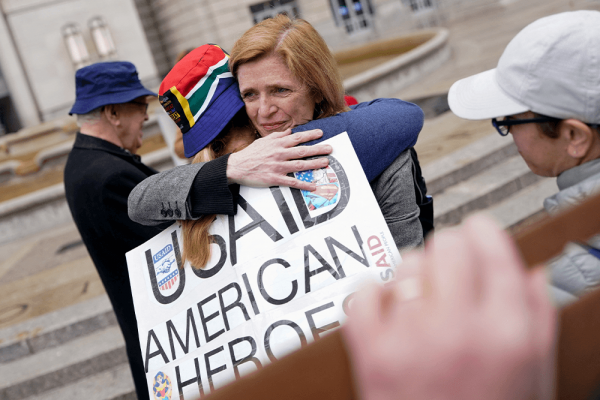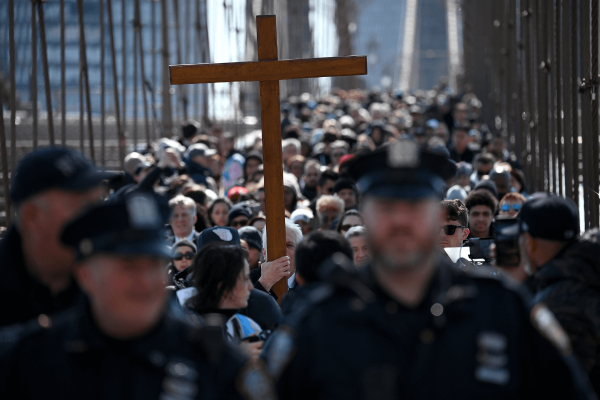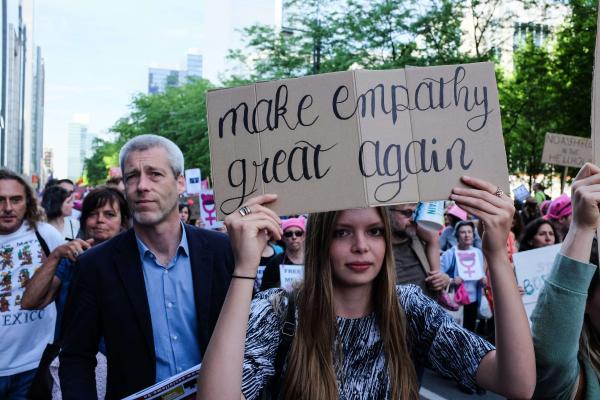MEDELLIN, COLOMBIA – Less than a year ago, Colombian Indigneous leader Anitalia Piachi was addressing the Catholic Church’s leadership, urging them to take action to help the Amazon region. Now her community is one of the hardest hit in Colombia’s COVID-19 pandemic, and the Church is helping to respond across the Amazon basin.
At the end of May, the Amazon basin region had almost 134,000 confirmed cases and 6,883 reported COVID-19 deaths according to a Catholic Church aggregation of published official government data from the region. There were nearly 115,000 cases in the Brazilian Amazon basin alone.
Piachi’s community outside of the Colombian city of Leticia, at the intersection of the borders of Peru, Brazil, and Colombia, remains locked down even as most Colombian cities begin to relax restrictions in the first week of June.
“Life has changed completely,“ Piachi told Sojourners.
Piachi, who implacably defended the Amazon on the world stage, casts an uncharacteristically dour tone as she describes the insecurity in the community in recent weeks, even with an increased military and government presence there.
“Life here is fearful; there are so many people here with fear,” she said, adding that younger people in the community, even young parents, were not taking the measures as seriously as the others in her agrarian community.
img_20191024_140809090_burst000_cover.jpg
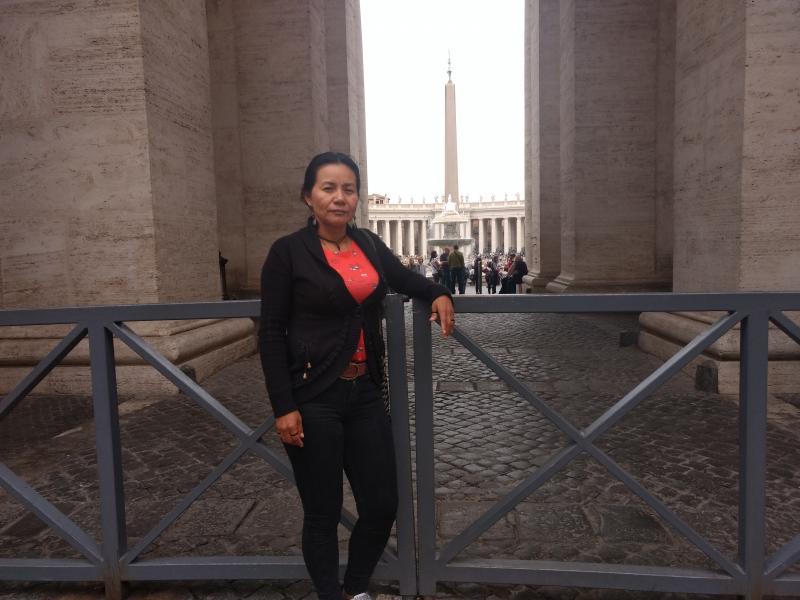
There have already been deaths in Anitalia’s group, with 1,355 active cases and over 50 deaths in total more broadly across Colombia’s Amazonas region.
At the moment, their primary defense, like many Indigenous groups is their traditional foods and medical plants.
“Our grandparents taught us that we have to 'dietar' the disease,” she said, using the term for dieting, which in the Indigenous context means a strict prescription of the right mix of those crops.
“We have to take in the right things if we are to take out the bad and return to health.”
However, beyond that, there is a scarcity of testing, protective equipment, and treatment across the Amazon.
Further south in Peru, Jorge Antonio Álvarez Dávila, director of faith-based NGO Living Water International in Peru, says his organization has continued their mission of bringing potable water to Indigneous communities in the Peruvian Amazon regions of Loreto and Ucayali, but COVID-19 adds a new layer of urgency.
Peru has been one of the hardest hit countries in South America, and cases are spiking in the Amazonian regions in the country’s east. In Loreto, there have been over 4,700 confirmed cases with nearly 300 deaths as of the end of May, and Ucayali saw about 4,000 cases with just over 100 deaths.
“In one of the regions we work in, 45 Indigneous have died, but it is almost impossible to get a test in these communities,” he told Sojourners, adding that lack of testing makes it hard to confirm that all those people died from COVID-19.
“Indigneous people are taking their traditional medicines, but there are pre-existing conditions in these communities, like anemia, dengue, malaria,” Alvarez-Davila said.
picture2.png

What the Church is doing
Felicio Pontes, a Federal Public Ministry prosecutor from the Brazilian state of Pará, which has nearly 40,000 cases as of the end of May, says Brazil is one of the hardest hit countries in the basin – and in the world – with over 465,000 cases and nearly 28,000 deaths.
Pontes, who is also a member the Pan-Amazonian Ecclesial Network (Red Eclesial Panamazónica or REPAM), a network of the nine Catholic churches in the Amazon basin, promoting human rights for Amazon peoples, says that the Catholic Church has been active in disseminating health messages and other concrete measures.
“The Catholic Church is starting to spread information about what COVID-19 is and how to spot symptoms and take precautions. That information alone could save thousands of lives,” he said, adding the church is also trying to find ways to get funds and protective equipment into these remote areas.
Mauricio Lopez, executive secretary of REPAM, speaking to Sojourners from Ecuador, said the Church was addressing the pandemic in the Amazon in both practical, on-the-ground measures and using its high-level influence.
Lopez said that in one example from Ecuador, the Catholic Church was able to work hand-in-hand with local and national health authorities to facilitate the testing of a recent-contacted tribe that appeared to already be infected. The Church was able to help the health workers access the community, and then a Catholic university did the lab tests within the regulations of the health authorities.
Both Lopez and Pontes said because of a lack of state presence and because of the Church’s role in funeral rites and community projects, the Church often had a better snapshot of the spread of the infection than national health authorities.
“The Church has some information, but it is delicate to share because you can't say that these are official figures,” Lopez said, adding that REPAM releases a compilation of the official statistics from across the region every three days and they are working with the Interamerican Human Rights Commission to make sure that Indigneous rights are being respected.
Lopez said there was also a role for the Church in lobbying for stronger attention and public policy.
“The Catholic Church has been trying to call attention to the problem in the Amazon, so the government will help,” he said, “But it is hard to influence public policy, because the Church is shining a light on the situation that's unfolding and that's not something the state really likes.”
“It is tough because in Venezuela and Brazil, the Church is seen as part of the opposition to the governments there, even considered by those authorities as enemies of the state,” Lopez added.
Crises all the way down
For the inhabitants of the Amazon basin, COVID-19, while directly life-threatening, is by no means the only existential threat that the region faces. According to Lopez, the pandemic has compounded — and been compounded by — existing crises relating to climate change and mining and land rights issues, on top of basics like clean drinking water, education, and even the most rudimentary health care.
It was only in November 2019 that Indigenous representatives from the Amazon basin nations had the chance to speak face to face with high-level Catholic clergy, scientists, and activists at the Synod of Bishops for the Pan-Amazon region (Amazon Synod).
At the end of the synod, all 120 paragraphs of the final statement were voted on by around 170 bishops. All the clauses were passed by more than a two-thirds majority. This included contentious elements like allowing the limited ordination of married men in the Amazon region, and continuing the commission to investigate permanent female deaconships.
Despite that focus, the situation in the Amazon has deteriorated.
“The extractive activities have continued and even intensified — and these outsiders might be a source of infection in these communities,” Lopez said.
The pandemic has make visible and validated all the the issues discussed at the Amazon Synod,” he said, “It had laid bare the entire situation of inequality and the other challenges that the Indigneous people face in the Amazon.”
Back in Colombia, Piachi says that life in the communities has to go on, even with all the challenges they face.
“The important thing is that we continue to cultivate our crops, eat, and continue on,” she said.
Got something to say about what you're reading? We value your feedback!


